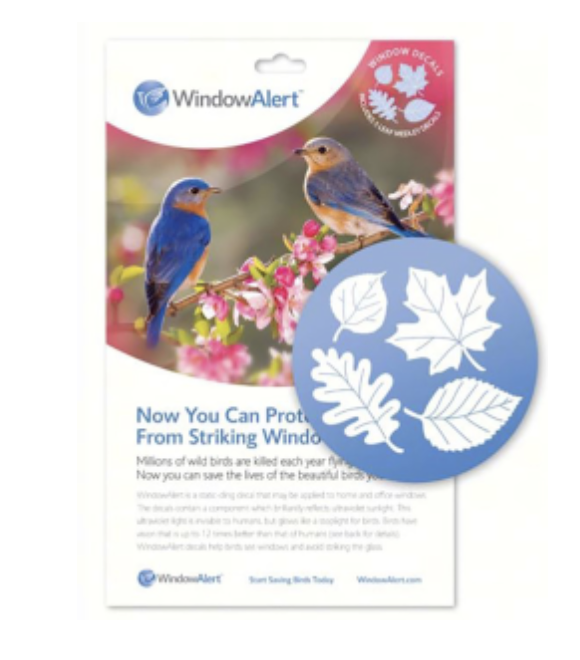Covid-19 Information:
We are open for you following CDC guidelines...
and also still providing curbside service!
Or, shop online at myWBU.com/SanAntonio!

Help Prevent Window Strikes
Birds will strike a window for various reasons. They hit the window mostly when they are panicked or during territorial chases. Occasionally, a bird will not recognize a window and mistake the reflection of the sky or yard for safe passage. Birds that collide with glass while in free-flight are rarely just “stunned”, even if they are able to fly away after a period of recovery. Most suffer internal injuries and should be, if possible, examined by a licensed wildlife rehabber. The best cure is to make your windows bird-safe.
You can make your windows safer with one or more of the following steps
- Place bird feeding stations within three feet (1 meter) of the window or beyond ten feet (3 meters). Within three feet, birds ‘fleeing’ the feeder area will not have built up enough speed to injure themselves if they strike the window. Beyond ten feet, birds will have enough time to spot and avoid the window.
- Set up a window feeder. It will help increase the birds’ awareness of the window and provide you close views of them feeding.
- Window screens are a great solution. If your windows don’t have screens, there are some netting options you can purchase to install over your windows to keep birds from injuring themselves.
- Hanging vertical exterior strips across the window at 4 inch (10 cm) intervals can be a good deterrent; especially, if they are a reflective mylar ribbon or even paracord.
- Try films or other window applications that create contrast. Research indicates the key to effectiveness is having them close enough together; usually within 4 inches (10 cm) vertically and 2 inches (5 cm) horizontally.
- Interior vertical or horizontal blinds with the slats half-open may make the window more visible and cut down on some bird casualties. Go outside and look to see if it is visible. If you can’t see it, the birds can’t see it.
- Soaping the window or using spray-snow is a good temporary solution to deter collisions until you can install a more permanent solution
Go to the following sites for more detailed information and solutions:
American Bird Conservancy, Stop Birds Hitting Windows page, https://abcbirds.org/get-involved/bird-smart-glass/
How you can help an injured bird?
Taking care of injured birds and wildlife should be left to people who know how to do it best. Local licensed rehabilitators include: Wildlife Rescue and Rehab (Based out of Kendalia, TX with a San Antonio facility), 830.336.2725, and for birds of prey, contact Last Chance Forever, 210.499.4080. Or try this website to locate a rehabilitator, https://theiwrc.org/resources/emergency/north-america as well as The Humane Society websites for rehabilitators in the U.S. Or, contact Wild Birds Unlimited San Antonio for assistance in locating a rehabilitator.
Window Attacks
Sometimes birds see their reflection in a window or even a car mirror and will attack the perceived intruder by pecking at the window or repeatedly dashing at the window. They are trying to chase the competitor out of their territory. This territorial behavior often happens during nesting season with cardinals, bluebirds, robins, mockingbirds, and other birds. You can deter the attacks by removing the reflection.
Because this is a seasonal behavior, it can be prevented with temporary measures such as covering the outside of the window with soap, newspaper, tempera paint, or a snow-type spray. Also, shining a bright light through the window from inside during the day may help eliminate any reflections on the outside.
Helpful Solutions from WBU
Window Alert Leaf Medley Decals
Window Alert is a decal that reflects ultraviolet sunlight, a light that is invisible to humans but very alerting and harmless to birds. Easily apply decals to your home or office windows and help prevent dangerous window strikes.


